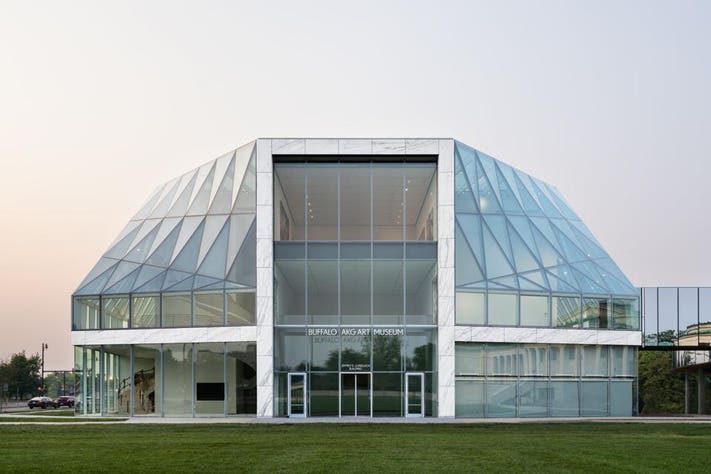The Buffalo AKG Art Museum in New York which closed for construction in 2019 has now opened to the public. Recently, the city celebrated the museum’s reopening and the culmination of a $230 million capital campaign with a special ribbon-cutting ceremony. This milestone represents Western New York’s cultural history, as it marks the largest campaign ever undertaken by a cultural institution.
The Museum’s officials announced that visitors can now take a tour of the new Buffalo AKG Art Museum. However, the officials will close a portion of the museum known as the Gundlach Building, later in the month. They will close it for about one month to complete construction on the building. While the rest of the museum will remain open to the public.
Also Read Brooks Museum of Art Project Breaks Ground in Tennessee
Featured amenities at the new Buffalo AKG Art Museum
Upon completion, the Gundlach Building will expand the museum’s exhibition space to a total of 50,000 square feet. It’s also the newest addition to the historic Buffalo AKG Art Museum, which was built in 1905. The museum named the building after Jeffrey E. Gundlach, a Buffalo native, who contributed $65 million to the expansion project.
Besides the 50,000-square-foot exhibition space, the new Buffalo AKG Art Museum features five state-of-the-art studio classrooms. The museum also has an acre of new public green space located above an underground parking garage. Additionally, visitors can have access to the Ralph C. Wilson, Jr. Town Square on the property.
OMA‘s partner Shohei Shigematsu was responsible for the series of architectural developments at the AKG Art Museum. Shigematsu ensured that the historic museum, originally built in 1905, retained its Neoclassical facade, while also breathing new life into it. Shigematsu has restored the staircase out front, which was previously removed during the Bunshaft project. Additionally, the museum’s galleries now have freshly installed wood floors.
Governor Kathy Hochul was pleased with the new AKG Art Museum development. Hochul described the new building and campus as a dramatic work of art that will attract visitors and support tourism.

